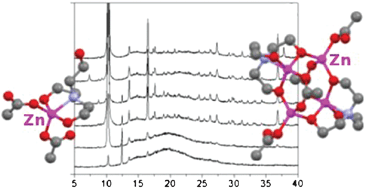Abstract
The rapid and massive formation of a foamy precipitate while reacting

* Corresponding authors
a
Dipartimento di Scienze e Tecnologie Avanzate and Nano-SiSTeMI Interdisciplinary Centre, Università del Piemonte Orientale “A. Avogadro”, Via T. Michel 11, 15121 Alessandria, Italy
E-mail:
marco.milanesio@mfn.unipmn.it, enrico.boccaleri@mfn.unipmn.it
Fax: + 39 0131 360250
Tel: + 39 0131 360226
b Swiss-Norwegian Beam Lines, ESRF, BP 220, F-38043 Grenoble Cedex, France
The rapid and massive formation of a foamy precipitate while reacting

 Please wait while we load your content...
Something went wrong. Try again?
Please wait while we load your content...
Something went wrong. Try again?
E. Conterosito, G. Croce, L. Palin, E. Boccaleri, W. van Beek and M. Milanesio, CrystEngComm, 2012, 14, 4472 DOI: 10.1039/C2CE06468E
To request permission to reproduce material from this article, please go to the Copyright Clearance Center request page.
If you are an author contributing to an RSC publication, you do not need to request permission provided correct acknowledgement is given.
If you are the author of this article, you do not need to request permission to reproduce figures and diagrams provided correct acknowledgement is given. If you want to reproduce the whole article in a third-party publication (excluding your thesis/dissertation for which permission is not required) please go to the Copyright Clearance Center request page.
Read more about how to correctly acknowledge RSC content.
 Fetching data from CrossRef.
Fetching data from CrossRef.
This may take some time to load.
Loading related content
